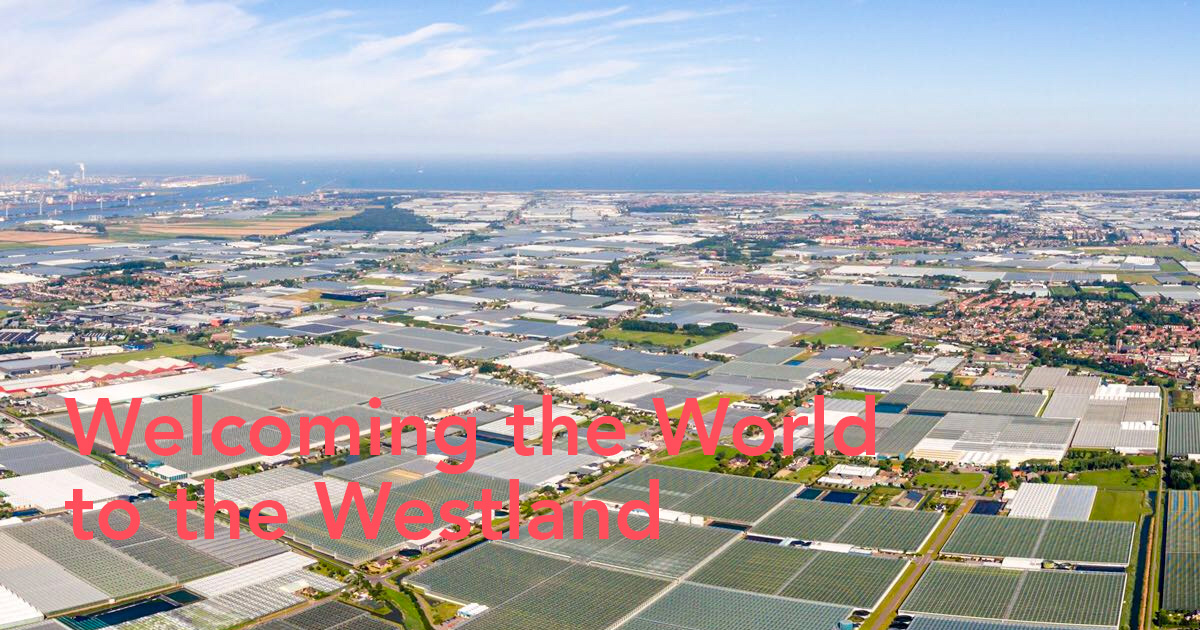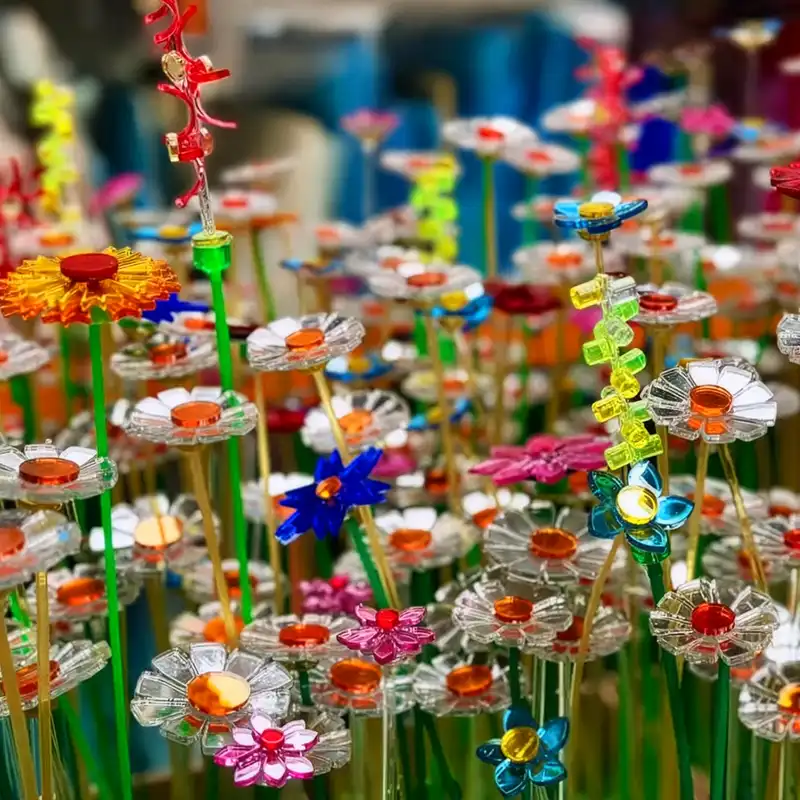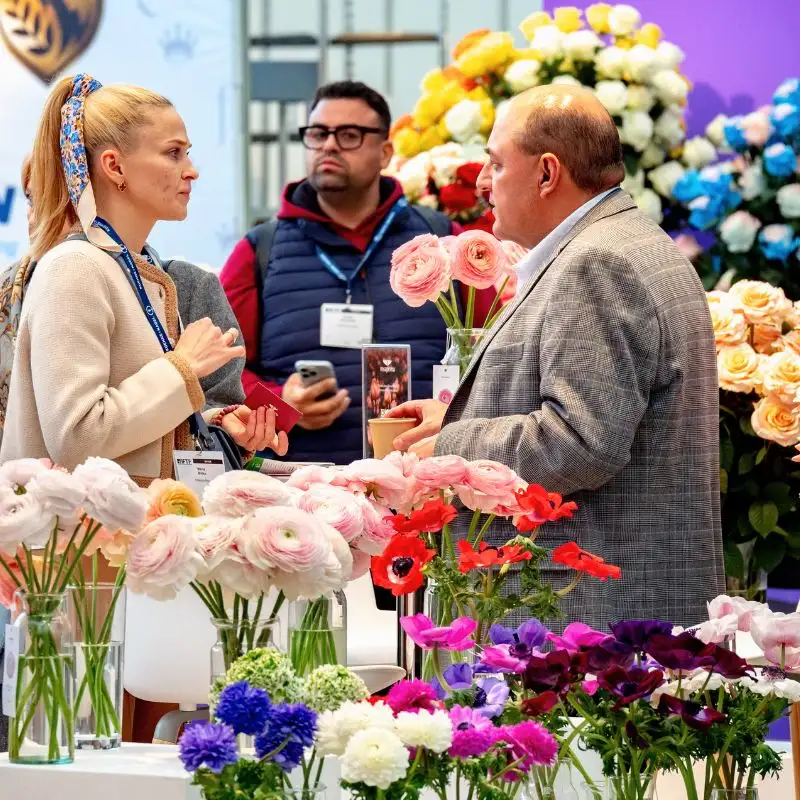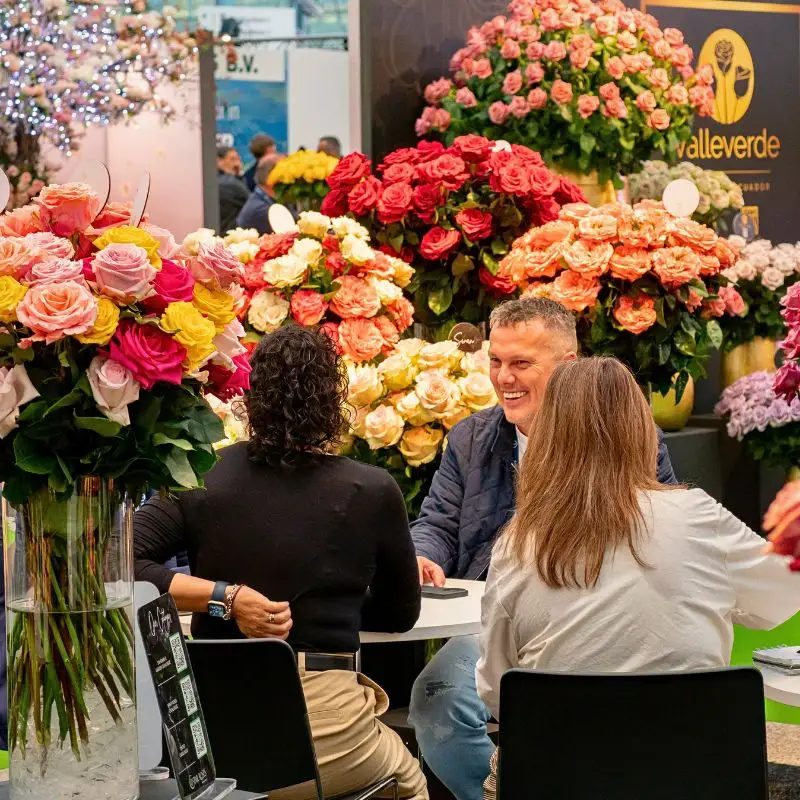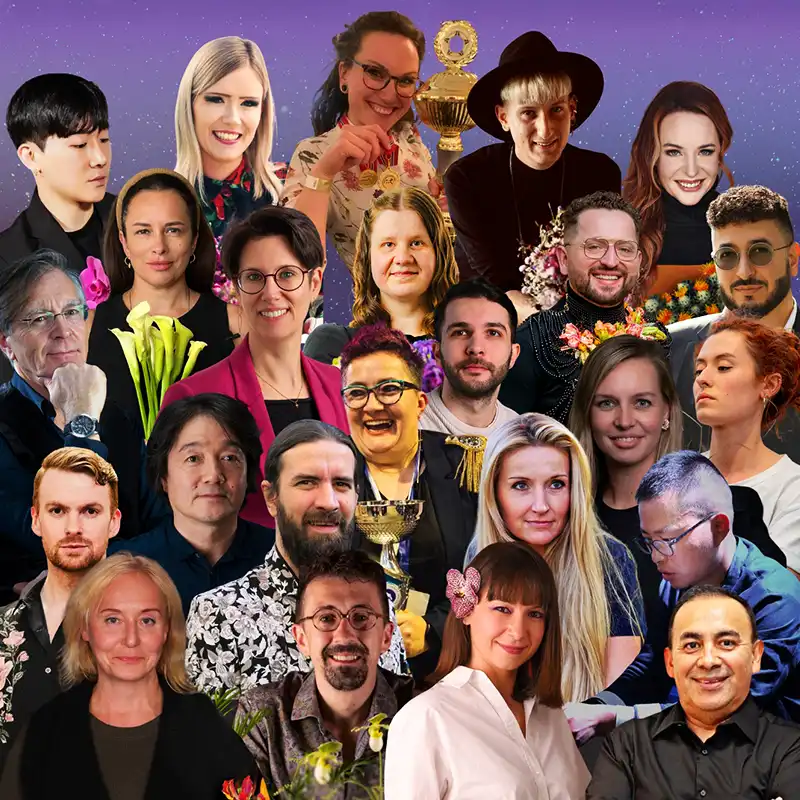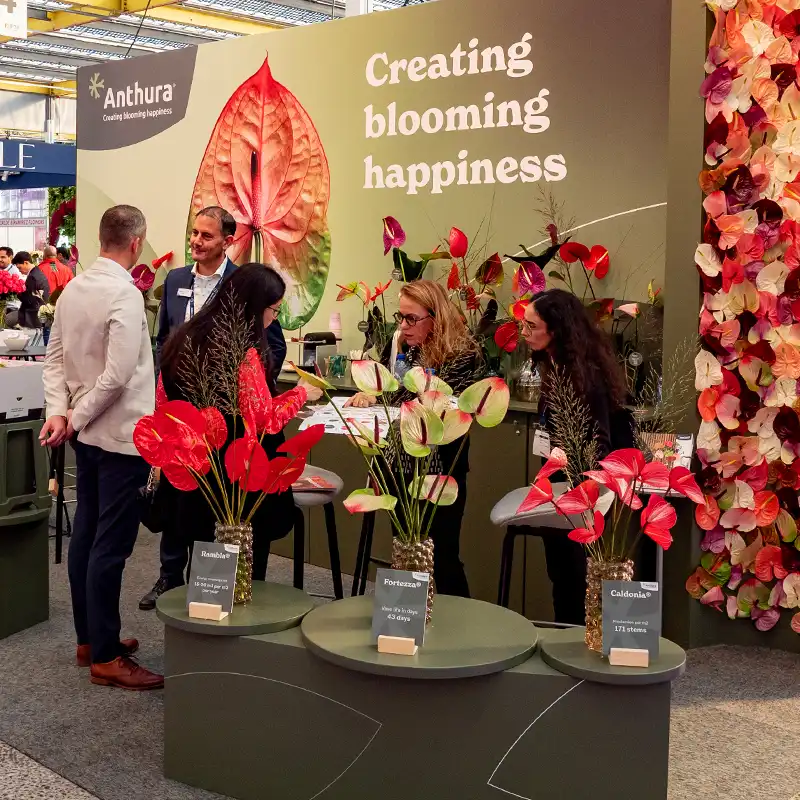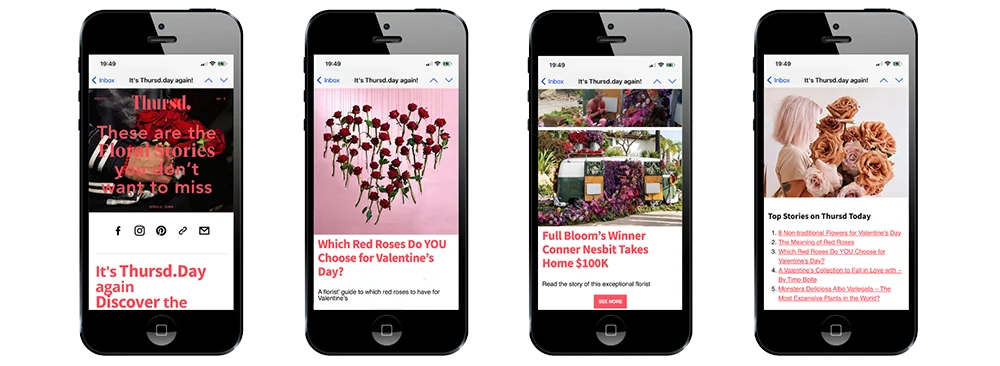If there’s anyone who lives and breathes Dutch horticulture, it’s Aad Verduijn. With more than fifty years in the industry and countless visitors from across the world walking through the greenhouses under his guidance, Aad has become one of the most recognizable faces of the area known as the 'Westland', which is the region around the second largest Royal FloraHolland flower and plant auction in Honselersdijk. He likes to call himself “just a guy who talks too much,” but for thousands of people who’ve joined his Westland Horti Tours, he’s much more than that. He’s a storyteller, technician, and – whether he admits it or not – a true ambassador of the Dutch greenhouse sector.
Aad Verduijn's Floral Life: From Machines to the Magic of Growing
Aad’s story starts far from the tours he now gives. “I started working with machines,” he recalls. “At first with Royal Brinkman, then with a bulb company, and eventually with Gebroeders Boekestijn. They were pioneers – the first company in the world that was growing on roll containers. That was a revolution. Those breeding tables could rotate. The idea was that employees shouldn't go to the plants, but the plants should come to the employees. This would mean they'd need far fewer staff. I could put all my energy there. I worked there for 27 years.”


He shrugs a bit when he looks back. “It was all about work back then. If I’d known better, I’d have spent more time with my family. But it was a special time full of innovations. We built an in-wrapper for plants, we experimented with conveyor belts, and we even heated the greenhouse with wood for nine years. I could really lose myself in that.”
After Boekestijn was sold, Aad found himself at a crossroads. “I sat at home for three months, a bit lost,” he says. “Someone told me to write down what I was good at and what I wasn’t. The list of things I wasn’t good at was about a meter long. The list of things I was good at was very short,” Aad says, laughing out loud.
Still, three things stood out. “I like being with people, I understand technique, and I can talk,” he says with a smile. “I always had this dream that I wanted to show people what happens here in the Westland. There’s so much going on. Those three things come together in Westland Horti Tours: I walk through the greenhouse with groups, I tell them about the technique and the crops, and I get to talk. After more than ten years, I still think it’s great.”

Showing the World What Dutch Growers Do
Through his tours, Aad welcomes visitors from all over the world – about 95 percent are from abroad. “Most of them come from Asia,” he explains. “Especially Korea and Japan. When they come here, they’re amazed. I tell them about the technology, but also about the people behind it.”
During his presentations, he explains how Dutch greenhouses have evolved. One of the inventions he is most proud of is the combined heat and power unit. “We use a CHP unit (Combined Heat and Power), in Dutch it's called a WKK,” he says. “You put one thing in – natural gas – and you get three things out: warm water, electricity, and CO2. Where else do you get three for one? That’s such a high efficiency. And all three of those things are needed in winter.”

LED lighting is another major step. “I heard about LED lighting twenty years ago, but only in the last six or seven years have we really seen the big shift,” he says. “LED uses less energy, gives less unwanted heat, and the most important thing is that you can play with light colors and frequencies. That has changed a lot in the greenhouse.”
Battling Misconceptions About Floriculture
What bothers Aad is how outsiders often misunderstand the horticultural world. “Many people think growers walk around in clogs destroying the environment, wasting energy, and spraying poison,” he says. “But that’s simply not true. This is top-level sport here. The people who grow in glass greenhouses in the Netherlands are the very best in the world. That’s why so many visitors come here.”
On his LinkedIn, he summed it up very directly: growers in the greenhouse sector are not old-style chemical sprayers but professionals who change and improve constantly. “We’re working every day on biological control, on hygiene, on smart systems,” he says. “We use less and less chemical crop protection. Every drop of water is thought through. Every system is measured. But still we get the label of ‘polluters.’”
That is why Aad keeps inviting critics and policymakers into the greenhouse. “I always say: come and look,” he says. “We have no secrets. I once had a Dutch politician here, and his mouth just dropped open when he saw what happens in a modern greenhouse. A lot of people think they know what we do here, but they really don’t. Come and see it for yourself.”

"Come and See It Yourself"
That sense of openness is exactly what makes his tours so effective. When groups arrive, Aad greets them in their own language – “annyeonghaseyo” for Koreans, “konnichiwa” for Japanese visitors. “They love that,” he says. “Then I show them how small our country is and how much we produce. Around 80 percent of what we grow here is exported. For many visitors, that’s hard to imagine.”
Walking through the greenhouses, he talks about light, temperature, water, CO2, and people. “Light is the most important input,” Aad tells his group. “Growers complain more about dark days than about cold days. Sunlight is still the best light you can get, and it’s free.” He also stresses the human factor. “A good grower has green fingers, a green heart, green blood, and green eyes,” he jokes. “You can automate a lot, but you still need people who understand plants.”
Innovation From Westland to the World
Aad is the first to admit that he is fascinated by practical innovation. He still talks with pride about the roll container system at Gebroeders Boekestijn and about the pipe-rail systems that transformed labor in tomato greenhouses. “I was walking with a picking basket through the rows, and when it was full, I had to walk all the way back to the central path,” he remembers. “Then someone came up with two pipes on the ground that were both heating and rails for a cart. You could take more crates at once. So simple, and yet nobody thought of it before. That’s genius.”
Looking ahead, robotics will be the next big step. From harvest robots to systems that help remove leaves or pick fruit, he sees many developments. But he also knows how hard it is. “A robot has to recognize color, shape, and softness,” he says. “For us as humans, it’s easy. For a machine, it’s incredibly complicated. Still, it will come, just like the milking robot did in dairy farming.”

A Legacy of Storytelling and Pride
After more than fifty years in and around the greenhouse, Aad remains remarkably modest about his role. “I once got a royal decoration,” he says. “That was a nice recognition, but there are many people who deserve it just as much.”
When asked what he is most proud of, he pauses for a long time. Finally, he answers: “I’m proud that I started working for myself about ten years ago and that I’ve been allowed to tell people how you can grow vegetables and flowers in a good and responsible way. People sometimes call me an ambassador of Dutch greenhouse horticulture. I always think: calm down, I’m just Aad. But if I can leave behind a bit of enthusiasm for our sector, then I’m very happy.”
Personally, he feels rich in the things that matter to him. “If people ask me how I am, I say: healthy but not rich,” he says. “But for me, health is one of the most important things in life. I’m grateful that I’m still healthy, that things are good at home, that we have three grandchildren, and that I can still be active. I sometimes say I’m one of the happiest people there is, and I mean that.”
For Aad, the message is clear. Dutch greenhouse horticulture does not need to shout louder just for the sake of it, but it does need to stand up for itself. “We don’t need to produce more,” he says. “We need to destroy less. There’s already enough food for everyone. Let’s focus on doing it right and showing the world how it’s done. And if you really want to know how it works, come and have a look in my Westland.”

Interested in a Tour?
Header image: Did you know that there are still approximately 9,500 hectares of glass greenhouses in the Netherlands? The Westland is, at approximately 2,200 hectares, the largest contiguous area of greenhouse horticulture in the Netherlands and the world. When you're in the neighborhood, why not book a tour with Aad? Get in touch with him via the Westland Horti Tours website.
All images courtesy of Aad Verduijn & Westland Horti Tours.

